![]()
Coul archive: First published on Couloir Online 14mar06
First Impression
When it first hit the market, back in 2001, the 7tm offered a releasable telemark binding that was not prone to pre-releasing. The 7tm package was not only reliable, but relatively trim and clean. Two years later, the 7tm Tour added a pivot at the toe for frictionless touring, a standard feature with AT bindings.
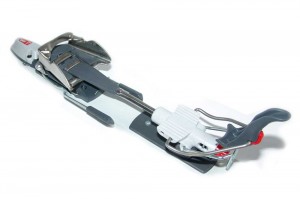
7tm Power Tour - Adequate power, excellent ROM MSRP: $350 Weight/pr: 4 lbs. 4oz (1.9 kg) ROM: 62+ deg
Karhu’s General Manager, Charlie Lozner always fended off such queries with a stoic, “That’s a ways off yet.” Silently we would think, “can’t you see the opportunity? Can’t you see you’re missing it? Can’t you see that power is a higher priority?” And they could, but Reinhold Zoor, the 7tm’s creator hadn’t yet had the light go off on how to make it work without having to redesign the entire toe plate.
Until he thought of replacing the cylindrical pin that gave the 7tm Power its power, with a bar. The problem had been that the latch at the back of the toe plate and the power pin were too close to coexist. But when Reinhold thought of the bar, suddenly it all fell in to place. Not only could they coexist without interfering with either function, but almost as importantly, it would also be possible to simply make it an upgrade to existing 7tm Tours (available in Fall 2006 for an estimated $40). That makes this development simply ingenious.
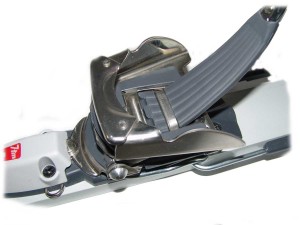
Notice the bar that holds down the power strap? The difference is noticeable & preferable, but not dramatic.
So how does it ski? The 7tm Power Tour skis remarkably; uphill and downhill.
Like any free pivoting binding, going uphill is a joy; if you enjoy the workout and the scenery of skinning in the backcountry, that is. Just as eliminating 15 pounds (average figure) of flex resistance dramatically reduces the energy needed to climb, it also makes the bane of telemark touring, kick turns, a joy as well. With a frictionless pivot at the toe, it is easy to switch directions, whether doing a snap kick turn on a steep, deep slope, or simply maneuvering your skis into a different direction. If you have traditionally avoided kick turns because of how laborious they are, you’ll begin to seek them out to practice this new, low energy way to switchback, and eventually, to show off your prowess at snapping your skis around.
Unlike BD’s O1, or G3’s Targa Ascent, where the pivot’s are slightly behind the pin line (more akin to the Dynafit or Silvretta Pure pivot positions), the pivot on the 7tm Power Tour (and 7tm Tour) is in front of the toe. It is subtle, but it does seem to make the binding’s weight more noticeable, and requires a bit more “snap” to get your ski tips to flip up on a snap kick turn. If you’re migrating from a classic cable binding though, these are insignificant points that you’ll never notice.
Perhaps even more noticeable is how much easier it is to simply move forward in deep snow. Instead of that high tension cable forcing your tips to remain buried beneath the surface, the free pivot allows your skis to float to the top each and every step (see mpg movie). You might still leave a trench for a trail, but at least you won’t feel like you were shoveling every step with the tip of your skis. And on firm snow, you might actually get a chance to notice how much glide is available from your climbing skins.
Okay, enough about the free pivot already, right?
How do they ski, as in making turns?
Beautifully.
We had epic pow conditions, where having too much flex resistance can cause tip dive and a face plant. Too little, and you feel like your rear tele ski is disconnected. The 7tm Power Tour felt like most other moderately active tele bindings. Without doing a side by side comparison or a calibrated bench test my first impression was that the 7tm Power Tour was definitely more active than a Targa Ascent with World Cup springs, and a tad stronger than BD’s O3, Rottefella’s R6, or HH #3. I’m betting after more extensive testing it will register as being slightly less active than BD’s O2 or O1, HH #4, the Cobra R8, or the Bishop in pivot #3. While I didn’t ski them in firm snow, my experience is that anything as active as a Targa with free flex springs is plenty for edge hold, and more is usually better. This puts the 7tm Power Tour in the middle of the active scale, right where most people prefer it. There remain a few whiner points that seem indigenous to the 7tm family. You still have to bend over to flip the switch from tour to downhill mode, or vice versa. However, as I learned yesterday, the convenience of making that switch with a pole is lost if the mechanism has a clump of ice on the latch that requires a leatherman to clear it away (like the Targa Ascent experienced, although I must point out, conditions were prime for icing up; skins, bindings, even the skis managed have ice cling on their surfaces). By contrast, there was no such issue with 7tm’s tour lever, quite the opposite of what I’ve long predicted. The climbing peg remains annoying to engage, but it is improved over the original 7tm Tour. But these are minor quibbles that pale compared to having three of the ultimate Tele Grail features available here and now (er, by October 2006).If you’ve been holding out for a binding that has release, plenty of downhill power, and touring freedom then you need look no further, the 7tm Power Tour is it.
© 2006
![]() Review of 7tm Tour from Couloir XVIII-4, Dec. 05
Review of 7tm Tour from Couloir XVIII-4, Dec. 05
Review of 7tm Tour from Couloir XVII-3, Dec. 04

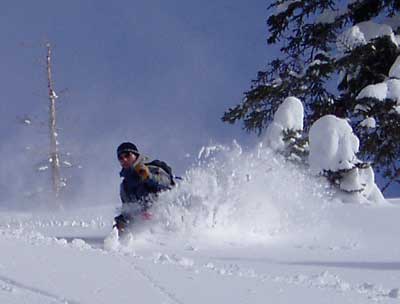
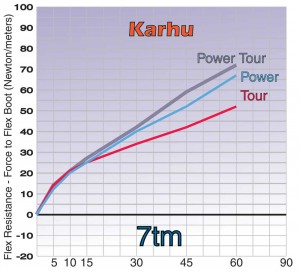
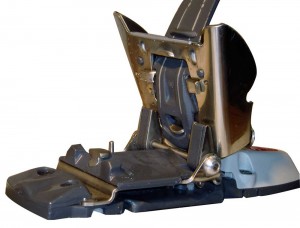
3 pings
[…] Articles: Review of 7tm Power Tour from Couloir Online Dec. 2006 Review of 7tm Tour from Couloir XVIII-4, Dec. 05 Review of 7tm Tour […]
[…] 7tm Pwr Tour […]
[…] Review of 7tm Power Tour from Couloir Online Dec. 2006 Review of 7tm Tour 2004-05, from Couloir XVII-3, Dec. ’04 […]